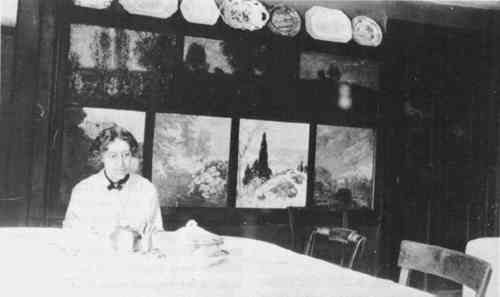UNDERSTANDING THE TECHNIQUES OF AMERICAN TONALIST AND IMPRESSIONIST PAINTERSLANCE MAYER, & GAY MYERS
1 INTRODUCTIONA collector of paintings in 1903 might have read in the newspapers about a sale in Paris where a painting by Constant Troyon (1810–65) brought the equivalent of $ 63,000. At the same sale, 11 paintings by Claude Monet (1840–1926) sold for much less—the most expensive one for the equivalent of $4,500 (New York Herald 1903). It is hard for us now to believe that in the early 20th century the works of the French Barbizon painters were much more highly valued than those of the French impressionists. In the United States, the art world was divided into similar camps around the turn of the century: George Inness (1825–94) had died in 1894, but the tonalist tradition was being carried on by artists like Dwight Tryon (1849–1929) and Henry Ward Ranger (1858–1916), painters who had been strongly influenced by the French Barbizon style. Challenging these painters was a group of slightly younger artists who organized themselves in 1897 as “The Ten.” The Ten was a diverse group, including Childe Hassam (1859–1935), John Twachtman (1853–1902), Willard Metcalf (1858–1925), William Merritt Chase (1849–1916), Frank Benson (1862–1951), and Thomas Wilmer Dewing (1851–1938), artists who painted in a variety of styles but whose work all showed the strong influence of Monet and the other French impressionists. In the United States, the tonalist painters were popular and successful, while most of the impressionists were not. A little more than a year before Twachtman died, he complained that he could not show his paintings because he could not afford any frames (cited in Hiesinger 1991) When Ranger, a leading tonalist, died in 1916, his One battle in this war of styles between tonalists and impressionists was fought in Old Lyme, Connecticut, a small town on Long Island Sound. In 1899 Henry Ward Ranger visited the area and wrote : “It looks like Barbizon, the land of Millet. … It is only waiting to be painted” (quoted in Andersen 1982, 6). Ranger brought other painters from New York and began an art colony centered around the boarding house of Florence Griswold. In 1903 Childe Hassam arrived; Hassam was one of the leading American impressionists, and he was soon followed by Willard Metcalf and others. The stylistic tension between the two camps is evident in a series of panels the artists painted and mounted on the walls of the dining room of the Florence Griswold House (fig. 1). The upper row of paintings, which was painted first, is much darker and more strongly influenced by the Barbizon style, while the lighter paintings in the lower row were painted after the colony had come under the influence of impressionism.
A few years earlier, John Twachtman had left New York and moved to Greenwich, Connecticut, where he was often joined by Theodore Robinson (1852–96), Willard Metcalf, and J. Alden Weir (1852–1919). Because of these New England connections—New York artists visiting New England in the summer to paint and in many cases deciding to live there permanently—this study of painting techniques has taken on a strong regional bias. Even though the study is focused on artists who worked in It seems important to investigate the techniques of these painters now, because there are still direct connections with the art of that time. William Chadwick (1879–1962) was a member of the artists' colony in Old Lyme, and his studio with many of his painting supplies still exists. Henry C. White (1861–1952) was a painter and great friend and biographer of the tonalist painter Dwight Tryon. His studio also still exists and was used by his son, Nelson C. White, and is still used by his grandson, Nelson H. White. We interviewed Nelson H. White, who carries on the tonalist tradition, and also Roger Dennis, who as a young man painted with many of the older generation of impressionists. Roger Dennis is a retired conservator; at the age of 90 he is still an active painter and one of the last American impressionists. We have treated a large number of American tonalist and impressionist paintings and have found that they are interesting and often complex in technique. Since little has been published about the technical side of American paintings of this period, we decided to investigate a number of primary sources, including archives of dealers who sold the paintings and letters and books written by the artists themselves. This is an ongoing study, and this article presents a summary of our findings to date about the topics of paint, paint additives, and the question of varnishing. |
